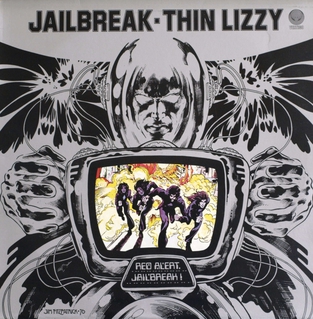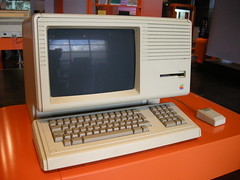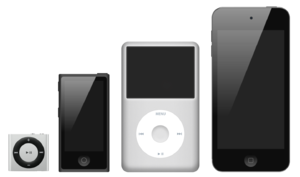On my latest TechTalk radio appearance, I discuss some rather banal issues with mobile device usage among the elderly before dropping a question about Einstein's most famous (and famously misunderstood) equation. Luckily Paul Ulreich from Verizon is there to clean up my mess -- at least on the phone front.
If you're curious about age-based accessibility for mobile phones, this is actually a very fine episode to give listen -- so long as you mute the parts where I'm talking. You know, the usual.
As always, my complete archive of podcasted misdeeds is available here
The personal blog of Jay Garmon: professional geek, Web entrepreneur, and occasional science fiction writer.
Showing posts with label Apple. Show all posts
Showing posts with label Apple. Show all posts
Thursday, September 26, 2013
Tuesday, November 08, 2011
Techtalk Trivia: What was the only manned space flight mission to take off on Halloween day?
 Image via Wikipedia
Image via Wikipedia
My latest TechTalk podcast/radio appearance was suitably seasonal: Ep. 248 – Every Day is Halloween!
TOPIC: Mike and Dave get together right before Halloween this year to tell you spooky tech stories … well, maybe not so spooky, but Dave does apologize for his comments about Steve Jobs from a few weeks ago, and an apology from the TechTalk show can seem almost supernatural in it’s rarity. Tablets and a possibly too-long discussion of IVR rounds out the show before …
Jay “Encyclopedia Garmonica” treats us to a totally a propos Halloweeny geek trivia question:
What was the only manned space flight mission to take off on Halloween day?And that leaves us ample time for some great seasonal coolsites of the week!
- PumpkinPatchesAndMore – Find all the local pumpkin patches in your area! Plus carving templates, recipes, and more.
- HalloweenPrintables – From the great folks at FreePrintables.net, come some cards, puzzles, and coloring pages just in time for Halloween!
- FantasyPumpkins – These are cool to look at all year, and include templates for many of the coolest pumpkins you’ve ever seen!

Tuesday, August 03, 2010
What operating system ran the world's first Web server? (Hint: It wasn't Windows, Mac or Linux!)
 Image via Wikipedia
Image via WikipediaIn the interim, Berners-Lee spent time perfecting his World Wide Web software, including the concepts of a server and a browser. He did all this on a then-outdated workstation running an operating system that was neither Windows, Macintosh, nor Linux (the last of which wasn't even invented yet).
What operating system ran the world's first Web server?
Thursday, July 29, 2010
Nerd Word of the Week: Jailbreaking
 Image via Wikipedia
Image via WikipediaI bring it up because: A federal judge ruled this week that jailbreaking is legal. Specifically, circumventing DRM is legal, so long as that circumvention doesn't then lead to actual illegal activity. Thus, you can break the DRM on your DVDs in order to make backup copies of your movies or convert them to run on incompatible devices you legally own. You can't break the DRM and then use your newfound powers to produce and sell discount copies of your film collection. This ruling now makes it legal to jailbreak devices so long as you don't then use those devices for illegal purposes. Apple, as you might expect, wasn't happy about the ruling and reminds you that jailbreaking still voids your iPhone warranty. Techcrunch thus asks if we're about to see jailbreaking go mainstream, but then answers its own question -- by way of a Harvard Law professor -- that while jailbreaking is now legal, providing jailbreaking software may not be. There's been no firm ruling on what happens to jailbreak developers, but you can bet that's who Apple and friends go after next.
Related articles by Zemanta
- Jailbreaking Your iPhone Is Now Legal (John Brownlee/Cult of Mac) (techmeme.com)
- Zittrain: No Get Out Of Jail Free Card For Jailbreak Developers (techcrunch.com)
- Apple's Official Response To DMCA Jailbreak Exemption: It Voids Your Warranty (Leander Kahney/Cult of Mac) (techmeme.com)
- Why Jailbreaking Won't Shoot Up, Albeit, Being Declared 'Legal' in U.S. (techpluto.com)
- What the iPhone jailbreaking ruling means (FAQ) (news.cnet.com)
- The Pros and Cons of iPhone Jailbreaking (cbsnews.com)
Tuesday, July 13, 2010
What Silicon Valley legend creates "custom" versions of US currency that are totally legal to spend?
 Image by ericskiff via Flickr
Image by ericskiff via FlickrStill, some idiots just can't resist counterfeiting large and/or fictional denominations of US money, even though they're almost invariably caught trying to pass these bills off. What's even more shocking are the imbeciles that try to pass these fake notes off at Las Vegas casinos -- perhaps the single most counterfeit-aware group of businesses on the planet.
Thus it's apropos that Vegas gave the most trouble to a legendary Silicon Valley businessman who creates unusual -- but perfectly legal -- "custom" versions of US currency.
What Silicon Valley legend creates "custom" versions of US currency that are totally legal to spend?
Tuesday, February 02, 2010
Truly Trivial: When did the famous 1984 Macintosh TV commercial first air -- before the Super Bowl?
I actually had a few fresh Truly Trivial columns squared up for possible publication this week, but the confluence of the iPad and the Super Bowl required that I excavate this gem from my old Geek Trivia days. Yes, the Apple fanboys should alternately pleased and perturbed:
[T]he definitive computer commercial for all time is, has been, and probably always will be the Apple Macintosh 1984 Super Bowl spot. Directed by a fresh-from-Blade Runner Ridley Scott and boldly implying that IBM was the evil corporate equivalent of Big Brother from George Orwell’s novel 1984 ... the commercial grabbed the attention of millions, became an artifact of pop culture and a standard-bearer for event marketing and Super Bowl commercial creativity, and launched the Macintosh line of personal computers — even though it aired only once.Read the complete Q&A here, then enjoy the sublime reference to the classic "Super Bowl" Mac ad in this Simpsons clip.
Except for one thing: Despite the legend, the spot didn’t air just during Super Bowl XVIII, nor was the Super Bowl spot the commercial’s first time on television.
WHEN DID THE FAMOUS 1984 APPLE MACINTOSH TV COMMERCIAL FIRST AIR?

Tuesday, January 26, 2010
Truly Trivial: How did Apple infamously deal with their unsold inventory of Lisa computers in the 1980s?
This trivia geek has been under the weather lately, so I'm recklessly going to the bullpen again for this week's Truly Trivial, resurrecting an old (but timely) Geek Trivia column. Apple is set to announce their new Apple tablet (or so we've been led to believe) in the next few hours. The uber-anticipated device is supposed to revolutionize publishing, gaming, Web surfing, commerce, race relations, economic disparity, and possibly even the quantum structure of the universe--at least according to Apple fanboys. How soon we forget that other Apple products have had similarly anticipated debuts only to fail miserably. No matter how certain you are that the Apple tablet is a can't-miss consumer device, just remember the sad tale of the Apple Lisa:

The Apple Lisa was the first commercially available stand-alone PC to employ both a graphic user interface (GUI) and a mouse. Developed under the direct supervision of Apple cofounder Steve Jobs, Apple intended the Lisa to revolutionize office computing as an all-in-one technical solution.
Beyond the GUI and the mouse, the original Lisa boasted several hardware and software features that were well ahead of their time. ... Too bad the Lisa cost almost $10,000 per unit and suffered woeful performance lags. The exorbitant amount of RAM and other high-end features made it significantly more expensive than IBM PCs and Apple's own Macintosh, which itself ran a faster, leaner GUI.
These drawbacks helped ensure that the Lisa never gained any significant market traction or adoption. After six years of frustrations and failures, Apple finally took a drastic and somewhat poignant measure to rid itself of the last 2,700 Lisa PCs it had in stock in 1989.
HOW DID APPLE UNLOAD ITS FINAL UNSOLD INVENTORY OF THE ORIGINAL LISA COMPUTER?Read the complete Q&A here.

Thursday, January 07, 2010
Nerd Word of the Week: Blobject
Blogject (n.) - A portmanteau of blob and object, a blobject is a household item or device distinguished by its smooth, rounded, almost seamless design. The iPod is a classic blobject, and its popularity has radically popularized the blobject design ethos. Blobjects owe their existence largely to computer-aided design and manufacturing, and you can see early inklings of its association with futurism in early 1970s sci-fi television and movies, where the smooth "plastic fantastic" designs of Logan's Run and its ilk took hold. This aesthetic was mainstreamed, arguably, by Star Trek: The Next Generation where rounded edges and buttonless interfaces were the norm. Everything was seamless, plastic, and disposable. In some ways, the steampunk movement arose as a repudiation of the blobjectivism of mainstream design, with the individualized, customized, constantly-tinkered-with and constantly maintained bulk and clatter of steampunk tech (and its associated DIY culture) rejecting the upgrade-every-year trendiness and assumed vacuousness of blobject ownership.
I bring it up because: I am presently at the Consumer Electronics Show, and though I wrote this entry before I left (Planning!) I fully expect CES to be dominated both by already know blobjects (Google's Nexus One) and speculation about possible future blobjects (Apple's iSlate tablet). It's just one more step towards an ability to instantly manufacture anything we can mock up in a CAD program -- hello 3D printing, which is already scheduled to be demo'd at this year's CES -- which is itself another increment on our journey towards Ray Kurzweil and Vernor Vinge's predicted techno-singularity. Just so long as the future has Wi-Fi, I'm cool.

I bring it up because: I am presently at the Consumer Electronics Show, and though I wrote this entry before I left (Planning!) I fully expect CES to be dominated both by already know blobjects (Google's Nexus One) and speculation about possible future blobjects (Apple's iSlate tablet). It's just one more step towards an ability to instantly manufacture anything we can mock up in a CAD program -- hello 3D printing, which is already scheduled to be demo'd at this year's CES -- which is itself another increment on our journey towards Ray Kurzweil and Vernor Vinge's predicted techno-singularity. Just so long as the future has Wi-Fi, I'm cool.

Tuesday, September 22, 2009
Truly Trivial: What secret F-U to the Beatles is hidden in the Mac OS?
It's part of the accepted wisdom of the technology community that Apple Computer cofounder Steve Jobs is a paranoid, narcissistic jerk who has channeled his character flaws into both a cult of personality and a world-changing consumer-tech empire. I mean, you've got to be something of a high-profile jackass for The Simpsons to devote and entire episode B-plot to punking you out, and since company culture often reflects the personality of its executive leadership, it's little wonder that Apple has a long and glorious history of getting sued by unlikely people. (Carl Sagan? Seriously?)
Still, it takes a special man and a special company to wage a three-decades-long trademark war with The Beatles. The core of this dispute (pun intended) is that the holding company for most of The Beatles' intellectual property is Apple Corps, which felt that Jobs' and Steve Wozniak's fledgling little tech concern was treading on their trademark turf. This dispute was settled in 1981 when Apple Computer paid Apple Corps $80,000 and promised not to enter the music business. So long as there was a clear separation between which company made tech and which company made (or, rather, licensed) music, everything was cool.
Then, in 1986, Apple started integrating MIDI synthesizer chips into their computers, a trend that culminated in the Apple IIGS line of desktops. To Apple Corps thinking, this was a breach of the settlement, so the Beatles IP-holder sued Apple Computer again. And won. And killed the IIGS line, along with any direct hardware integration of synthesizer or music-mixing tech into Apple computers.
Now, as they say, it was on.
Apple resented the Beatles for nixing its foray into sound tech, and Apple Corps was watching Apple Computer like a hawk for any sign that Steve Jobs' company was treading anywhere near music industry territory. It got so bad inside Apple Computer that the company's legal department had to sign off on any system sounds that may or may not be interpreted as "excessively musical."
Thus it came to be that in 1991 former Apple sound designer Jim Reekes created a little file that has been in every Mac OS since System 7 -- one intended in part as a subtle, secret kiss-off to Apple Corps and their legal representatives for all the inconvenience their litigious oversight caused Apple Computer developers.
So, what secret F-U to the Beatles (or, at least, their lawyers) has been hidden in the Mac OS for almost 20 years?
Still, it takes a special man and a special company to wage a three-decades-long trademark war with The Beatles. The core of this dispute (pun intended) is that the holding company for most of The Beatles' intellectual property is Apple Corps, which felt that Jobs' and Steve Wozniak's fledgling little tech concern was treading on their trademark turf. This dispute was settled in 1981 when Apple Computer paid Apple Corps $80,000 and promised not to enter the music business. So long as there was a clear separation between which company made tech and which company made (or, rather, licensed) music, everything was cool.
Then, in 1986, Apple started integrating MIDI synthesizer chips into their computers, a trend that culminated in the Apple IIGS line of desktops. To Apple Corps thinking, this was a breach of the settlement, so the Beatles IP-holder sued Apple Computer again. And won. And killed the IIGS line, along with any direct hardware integration of synthesizer or music-mixing tech into Apple computers.
Now, as they say, it was on.
Apple resented the Beatles for nixing its foray into sound tech, and Apple Corps was watching Apple Computer like a hawk for any sign that Steve Jobs' company was treading anywhere near music industry territory. It got so bad inside Apple Computer that the company's legal department had to sign off on any system sounds that may or may not be interpreted as "excessively musical."
Thus it came to be that in 1991 former Apple sound designer Jim Reekes created a little file that has been in every Mac OS since System 7 -- one intended in part as a subtle, secret kiss-off to Apple Corps and their legal representatives for all the inconvenience their litigious oversight caused Apple Computer developers.
So, what secret F-U to the Beatles (or, at least, their lawyers) has been hidden in the Mac OS for almost 20 years?
Subscribe to:
Posts (Atom)









